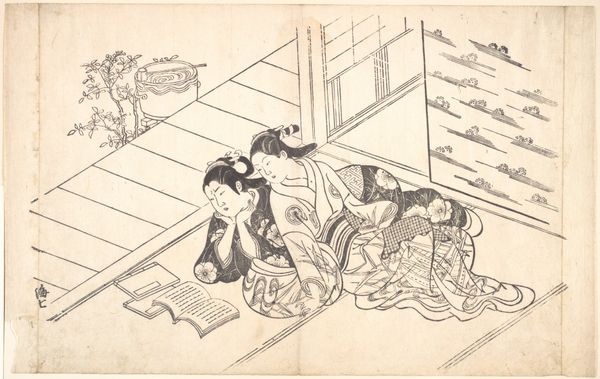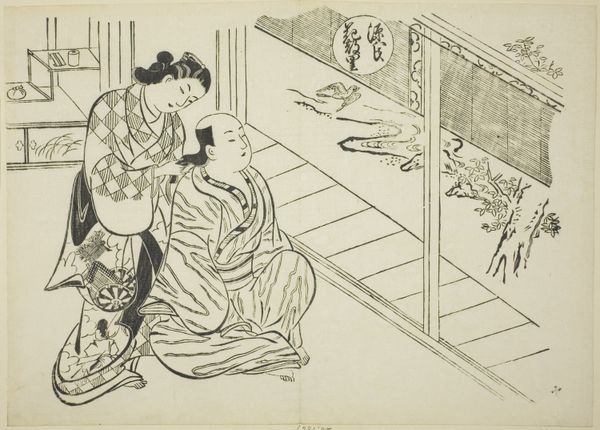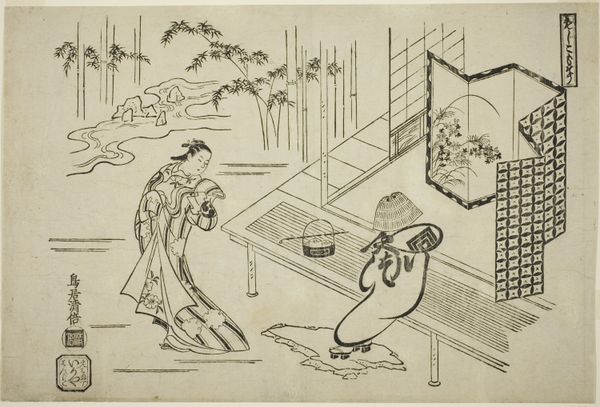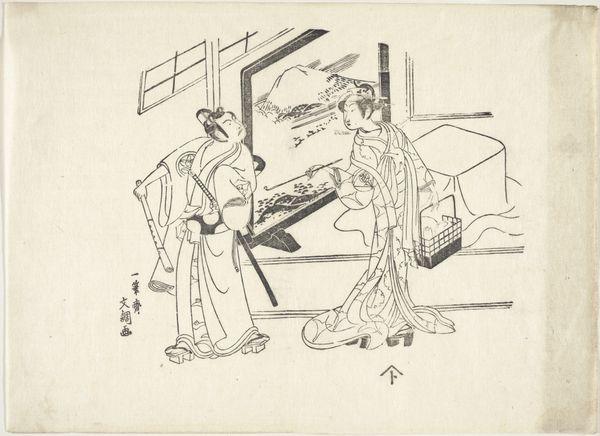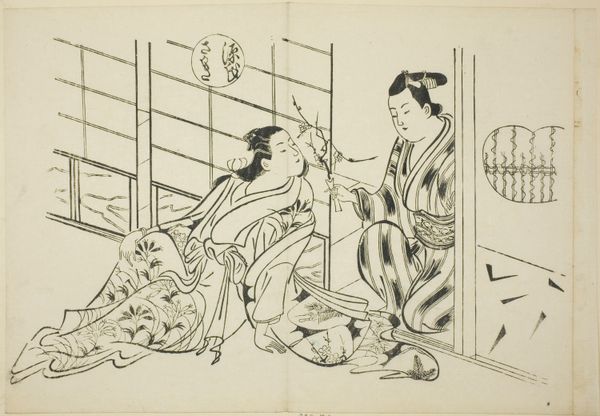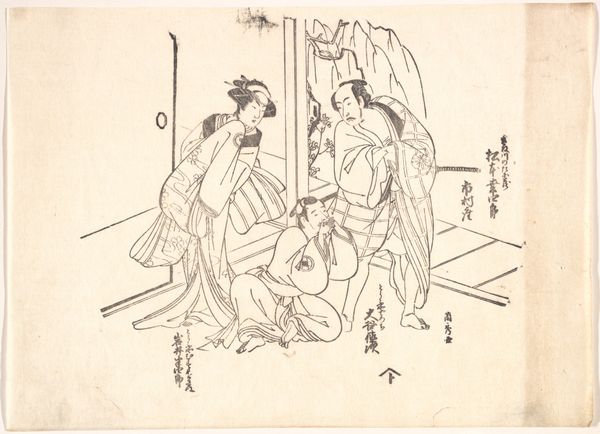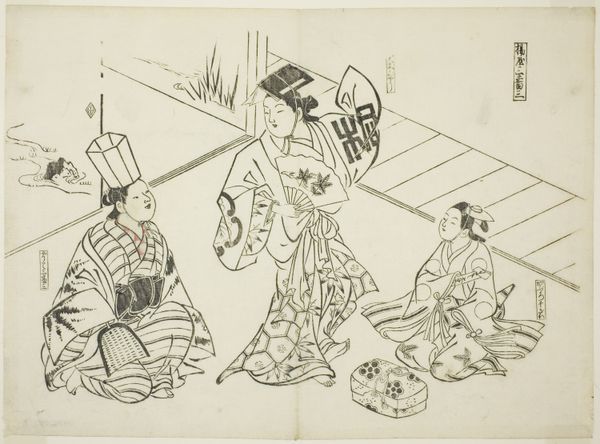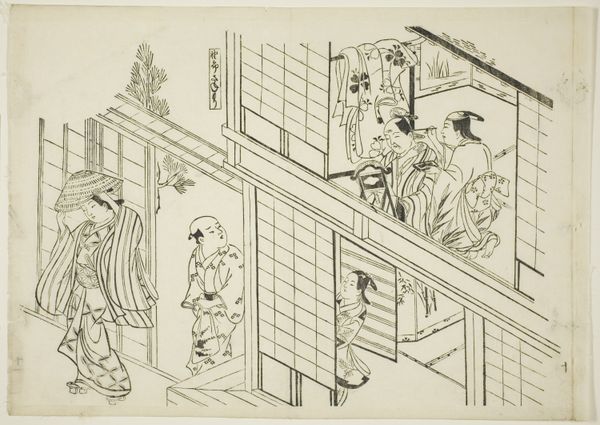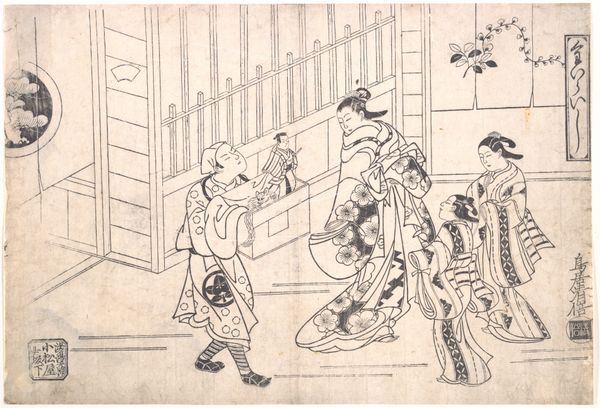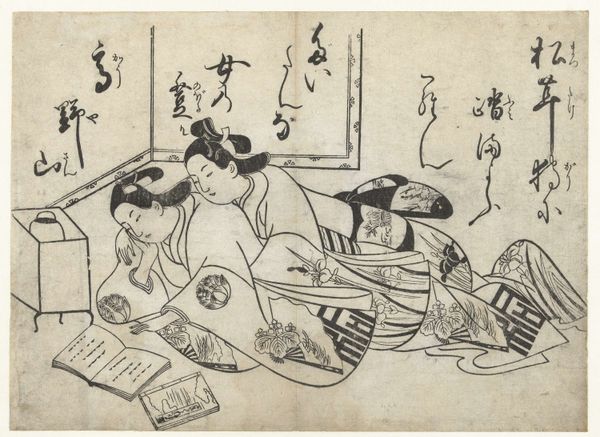
A Woman Nomori (Onna Nomori), no. 11 from a series of 12 prints depicting parodies of plays c. 1716s - 1726s
0:00
0:00
drawing, print, paper, ink, woodblock-print
#
drawing
# print
#
pen sketch
#
asian-art
#
ukiyo-e
#
figuration
#
paper
#
ink
#
woodblock-print
#
genre-painting
Dimensions: 27.1 × 38.2 cm
Copyright: Public Domain
Curator: This pen and ink drawing, a woodblock print on paper, is titled *A Woman Nomori*, or *Onna Nomori*, and it’s number eleven from a series of twelve prints depicting parodies of plays, made by Okumura Masanobu, circa 1716 to 1726. You can find it here at the Art Institute of Chicago. Editor: It strikes me as quite playful. There's a lightness to the lines despite the heavy subject of... is that jealousy I sense, emanating from the figure looking up at the descending woman? Curator: It’s a parody, remember! This print satirizes social roles. Look at the woman downstairs—her elaborate hair and makeup juxtaposed with her unflattering features mocks the expectations of feminine beauty and elegance within the floating world. Editor: Ah, so it's poking fun at the concept of beauty, using caricature to disrupt the idealized geisha image usually presented. The mirror she’s holding, reflecting the idealized face – it’s such a classic symbol of vanity and superficiality. It’s interesting how those symbols transcend cultures. Curator: Absolutely. The 'floating world,' or *ukiyo-e*, prints often addressed the realities beneath the surface of entertainment and pleasure. This artist and print are playing with themes of deception, appearance versus reality. How social standing and presentation intertwine in Japanese culture are especially visible through Masanobu’s art. Editor: It is also the idea of role playing. The seated woman literally reflects another, desired self in her mirror, as the woman on the staircase seems to step down into another persona. Curator: Yes, and consider the context of this artwork! The early 18th century Japan was ruled by the Tokugawa shogunate; there were clear distinctions and social structures for its citizens. These prints allowed commentary on, and potentially subversion of, these strict social roles. It was an entertainment product. Editor: I wonder if, for viewers then and now, these familiar cultural markers give a special flavor to it. The staircase motif itself could be read as the precarious climb to attain prestige… and the descent? I want to read the steps symbolically! Curator: The symbols are always there if we wish to seek them out. Each generation engages with these symbols, interpreting them with their own understanding of historical and present realities. What’s revealed through Masanobu is a fascinating window into the Edo period. Editor: And for me, I find it a commentary on self-perception and societal expectations. A timeless theme, wouldn’t you agree?
Comments
No comments
Be the first to comment and join the conversation on the ultimate creative platform.
